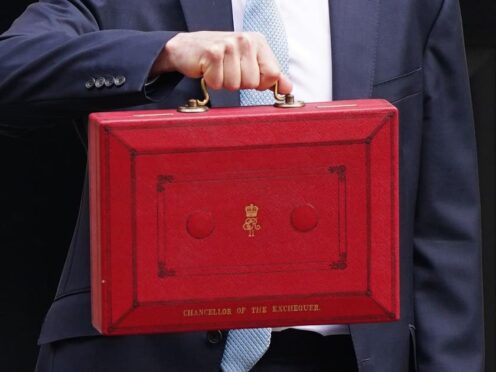Jeremy Hunt has slashed personal taxes to their lowest level since 1975 as he made a 2p cut in national insurance the centrepiece of his pre-election Budget.
However, experts noted any gains could be offset by the continued freezing of thresholds for income tax.
The cut in national insurance by a further two percentage points, from 10% to 8%, means an additional £450 a year for the average employee, the Chancellor said.
Two million self-employed people will get an extra £350 thanks to a cut in the main rate of self-employed national insurance from 8% to 6%.
Combined with a previous reduction, which was announced at the autumn statement and came into effect in January, it will be worth £900 a year for 28 million workers and £650 for the self-employed.
The latest changes, taking effect from April 6, will mean workers see a one-third reduction in their main rate of national insurance contributions compared with a year earlier – the largest-ever cut.
Fiscal watchdog the Office for Budget Responsibility (OBR) said the further 2p cut will cost £10.5 billion a year.

But the net cost is reduced to £8.9 billion once indirect effects are considered, with the measure expected to boost the labour supply by an equivalent of 98,000 full-time workers by 2028-29, of which the majority is a further increase in hours worked by those already in a job.
Combined with the autumn reduction, the latest cut will mean the equivalent of around 200,000 more people in work, filling one in five vacancies, Mr Hunt said.
In his Budget speech, the Chancellor said: “This is the second fiscal event where we have reduced employee and self-employed national insurance. We have cut it by one third in six months without increasing borrowing and without cutting spending on public services.
“That means the average earner in the UK now has the lowest effective personal tax rate since 1975 – and one that is lower than in America, France, Germany or any G7 country.”

The combined impact of Government policy from 2022 reduces the tax burden by 0.6 percentage points, according to the Treasury.
But the changes come against a backdrop of frozen thresholds which will see more people pulled into tax or higher brackets as their earnings rise under an effect known as fiscal drag.
OBR chief Richard Hughes said the further net tax cuts announced in the Budget help to reduce the overall tax-to-GDP ratio by around half a percentage point relative to the watchdog’s November forecast.
However, “it is still set to rise over the next five years to close to a post-war high of just over 37% of GDP”, he said.

Mr Hughes said about a third of the 4 percentage point increase in the post-pandemic tax take is due to the decision to keep the main personal tax allowances and thresholds frozen, in the face of high inflation since 2022.
This drags growing numbers of people into higher tax bands, creating more than three million more taxpayers, with over two million more in the higher rate, and more than half a million more additional rate taxpayers by 2028.
Mr Hunt did not answer when asked if he was planning to raise tax thresholds.
When it was put to him that many workers will still be worse off even after the tax cut due to fiscal drag, he told reporters in London: “Even after you take account impact of thresholds, what you see is that after four percentage points cut in national insurance, there is a big reduction in the tax bill for ordinary families.”

The OBR said the maximum gain from the national insurance cut will be felt by those earning more than about £50,000 a year.
Combining the autumn and spring cuts, basic rate payers will see annual gains of £606, while higher rate taxpayers will keep an extra £1,291 and those on the additional rate get £1,413, the watchdog said.
Mr Hunt pledged to further slash national insurance to end the “unfairness” of the “double taxation of work”.
The will only happen “when it is responsible, when it can be achieved without increasing borrowing and when it can be delivered without compromising high-quality public services”, he said.
The Government will launch a consultation later this year to deliver its commitment to fully abolish class 2 national insurance, according to the Treasury.
